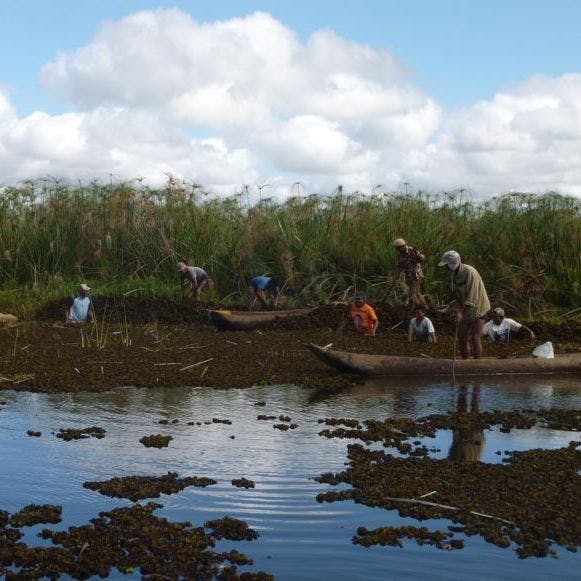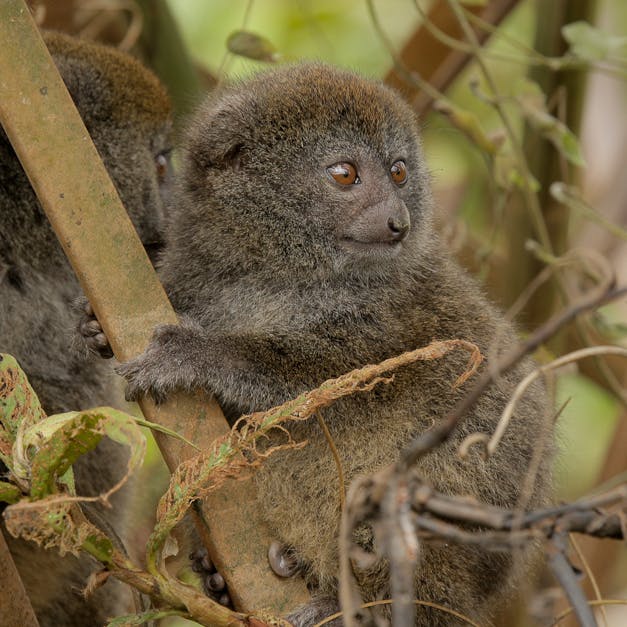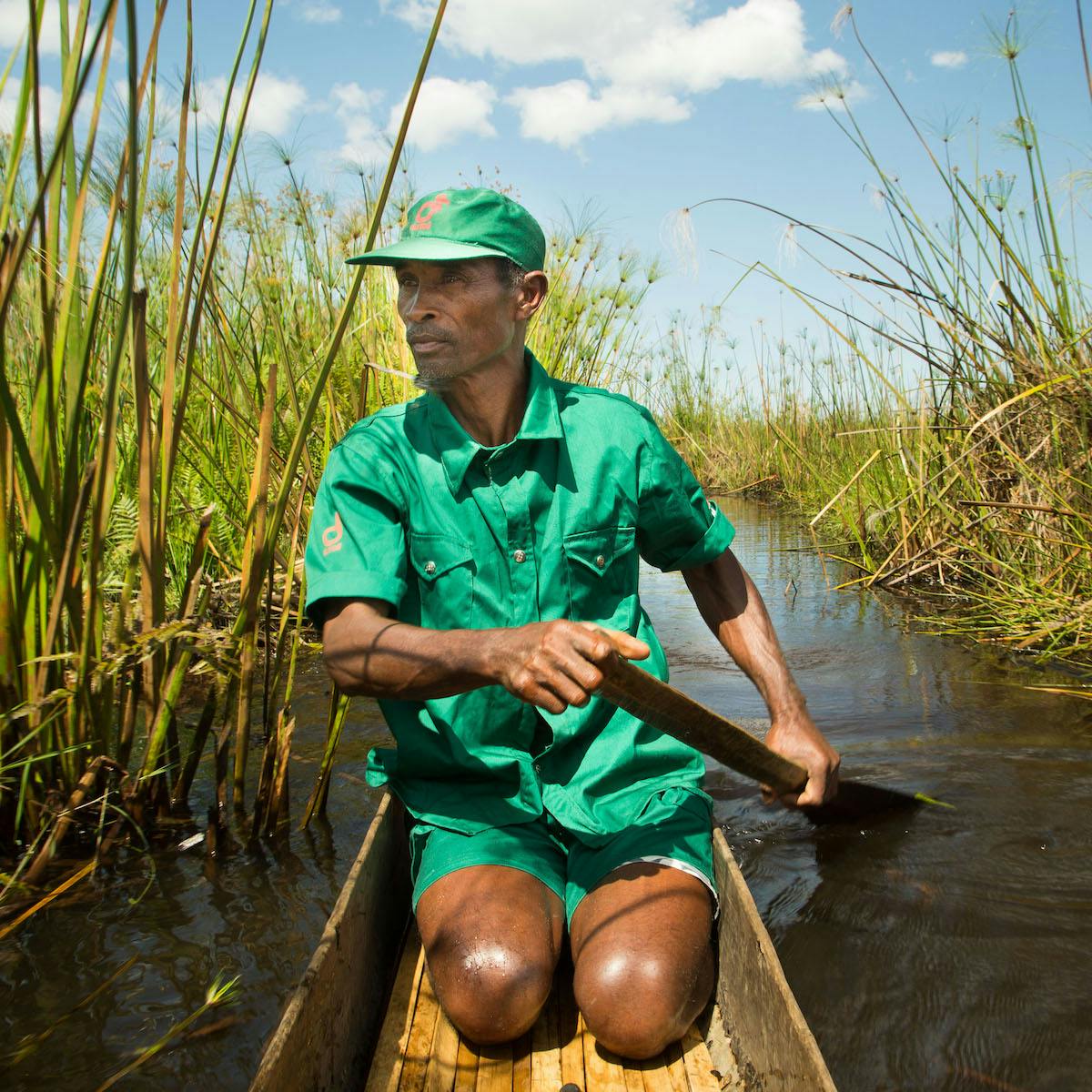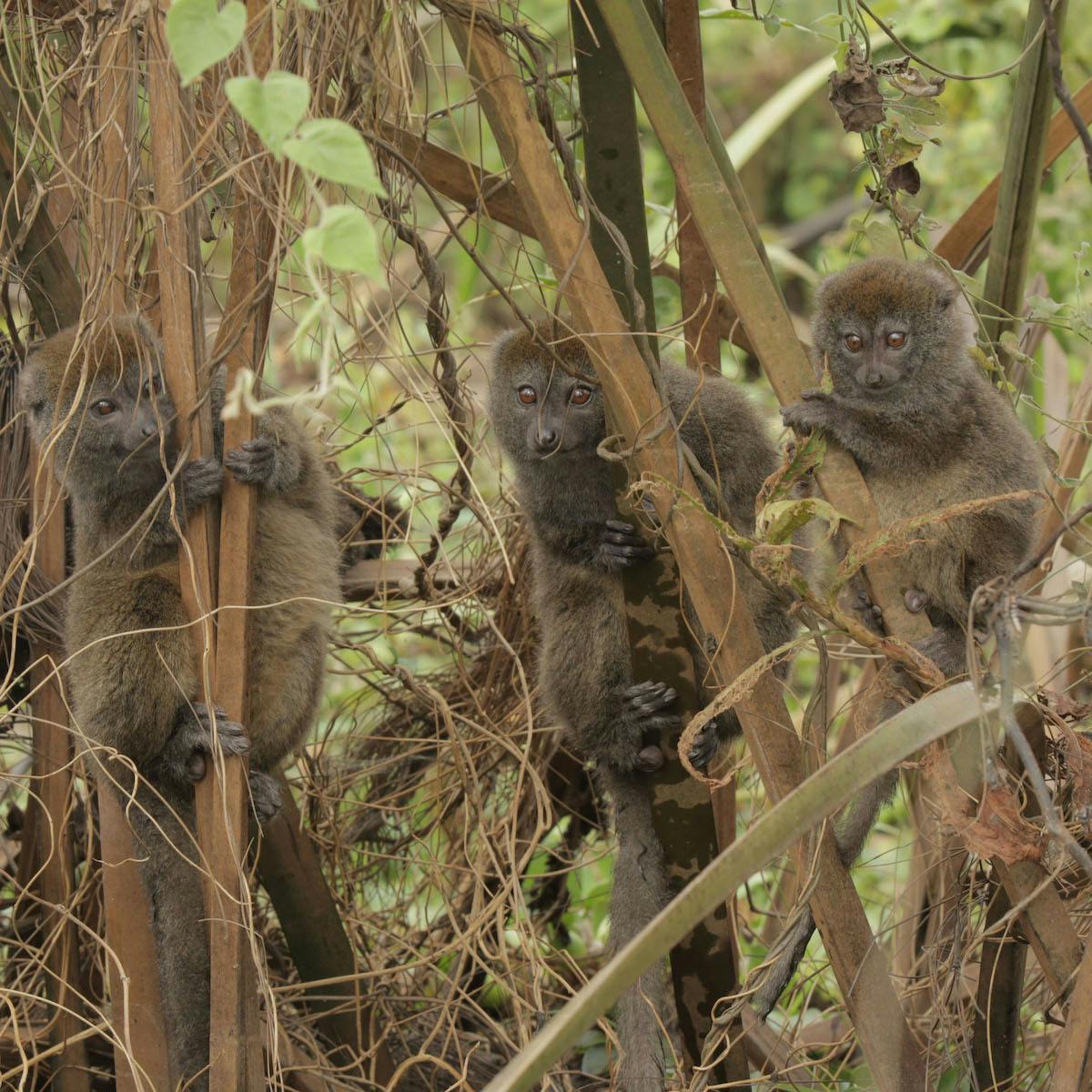- Budget spent: £4,863
- Status: Implemented
Along the shores of Lac Aloatra in Madagascar lives an endemic reed dwelling lemur – the Alaotran gentle lemur (Hapalemur alaotrensis). Locally known as Bandro, the Alaotran gentle lemur is under threat from habitat loss, bushmeat hunting and the pet trade. The most recent figures point to an alarming decline in their numbers over the last five years, with 30% of the wild population being lost. Today, there are only an estimated 5,000 Alaotran gentle lemurs left. So, in February 2020, we joined forces with Durrell Wildlife Conservation Trust to support their work in restoring the vital wetland habitat that the lemurs depend on and help bring them back from the brink of extinction. This project is funded through our business membership with PCF Bank.
Project Timeline
May 2021
Removal of the invasive plant species is completed and on-going monitoring begins.
April 2021
Composting begins to convert waste vegetation to organic compost for local farmers.
The Intervention
Invasive aquatic plants, salvinia (Salvinia molesta) and water hyacinth (Eichornia crassipes), are currently causing severe problems in Lac Alaotra. They cover approximately 60% of the primary fishing channels and access routes around the lake and marshes. Local fisherpeople are then forced to burn new areas of reedbeds and marshes so that they can access the lake and earn a living. These plants are also reducing water quality and preventing the reedbeds from naturally generating. To improve access for fishing and patrol canoes and improve water quality, we are supporting the clearing of invasive plants along 10km of key fishing and access channels. This will be carried out by the local community members, who will also benefit from the project through the production of organic compost, made from the plant waste. Community patrol teams will then monitor the cleared areas to prevent the invasive plants from returning.

Learn More About the Context Behind this Project
Why is this Species Important?
The Alaotran gentle lemur is endemic to Lac Alaotra. This means it’s found nowhere else in the world. It is also the only primate in the world whose habitat is confined to wetlands. Because of this, it is at extreme risk of global extinction if we do not intervene. It is one of five species of bamboo or gentle lemur but is significantly larger than the others. It uses its grasping hands and feet and long tail to balance when walking along reed stalks in its lakeside habitat and may possibly be able to swim.

Why Do They Need Protecting?
Lac Alaotra is Madagascar's most important rice-producing region and inland fishery. Unfortunately, migrating populations who come to Alaotra seeking fertile croplands are burning huge swathes of reed beds to convert to rice-paddies. Years of poor management and traditional monoculture cultivation have gradually reduced annual productivity, creating a vicious cycle in which more land is burnt each year for agriculture. Approximately 2,000 hectares of marshland are burnt each year, with devastating consequences for the lemurs. The quality of the lake and its wetland habitats are also under threat from the deforestation of the surrounding hills, which is causing soil erosion and water pollution of surrounding areas.

The Bushmeat and Pet Trade
While habitat loss is the primary threat to the gentle lemur, hunting for food and for the pet trade is also adding to the problem. Although legally protected in Madagascar, evidence suggests that a large number of lemurs are hunted annually, with more than 1,000 casualties recorded in some years. To compliment the habitat restoration work, Durrell are also running a local education programme to improve awareness among local people of the importance of protecting the lemurs and their habitat.
Along with the wildlife pet trade, find out about other imminent threats facing wildlife from human-related activities in our Responsible Travel Tips guide. The guide highlights issues associated with tourism and provides tips on how to play a positive part in them.

Sources & further reading

- “Population status of the Alaotran gentle lemur Hapalemur griseus alaotrensis” - Oryx
- “Illegal captive lemurs in Madagascar: Comparing the use of online and in‐person data collection methods” - American Journal of Primatology